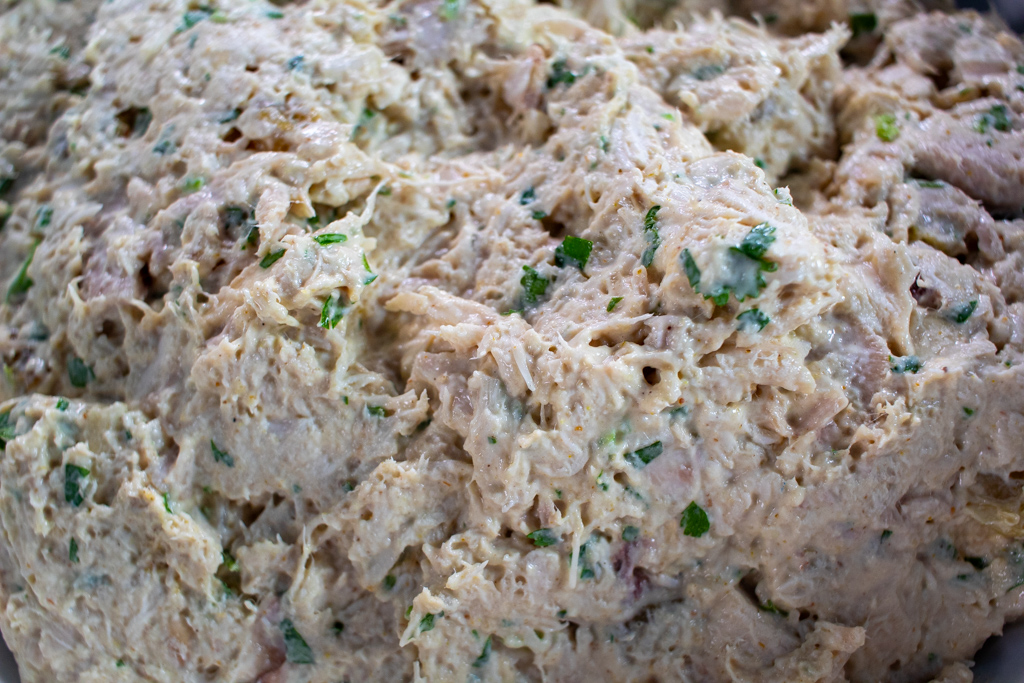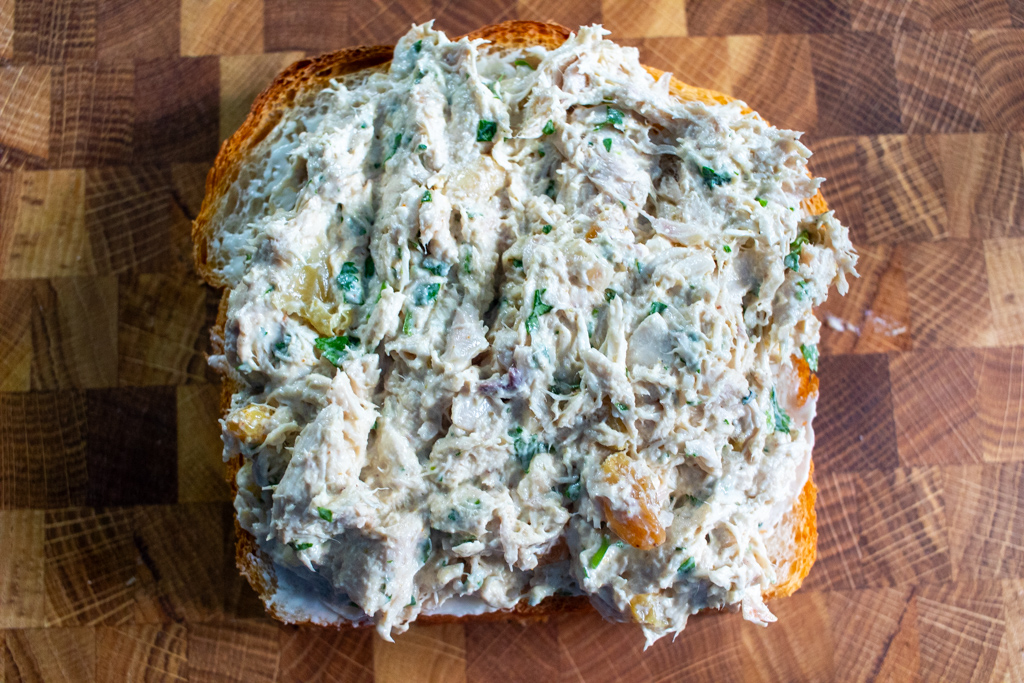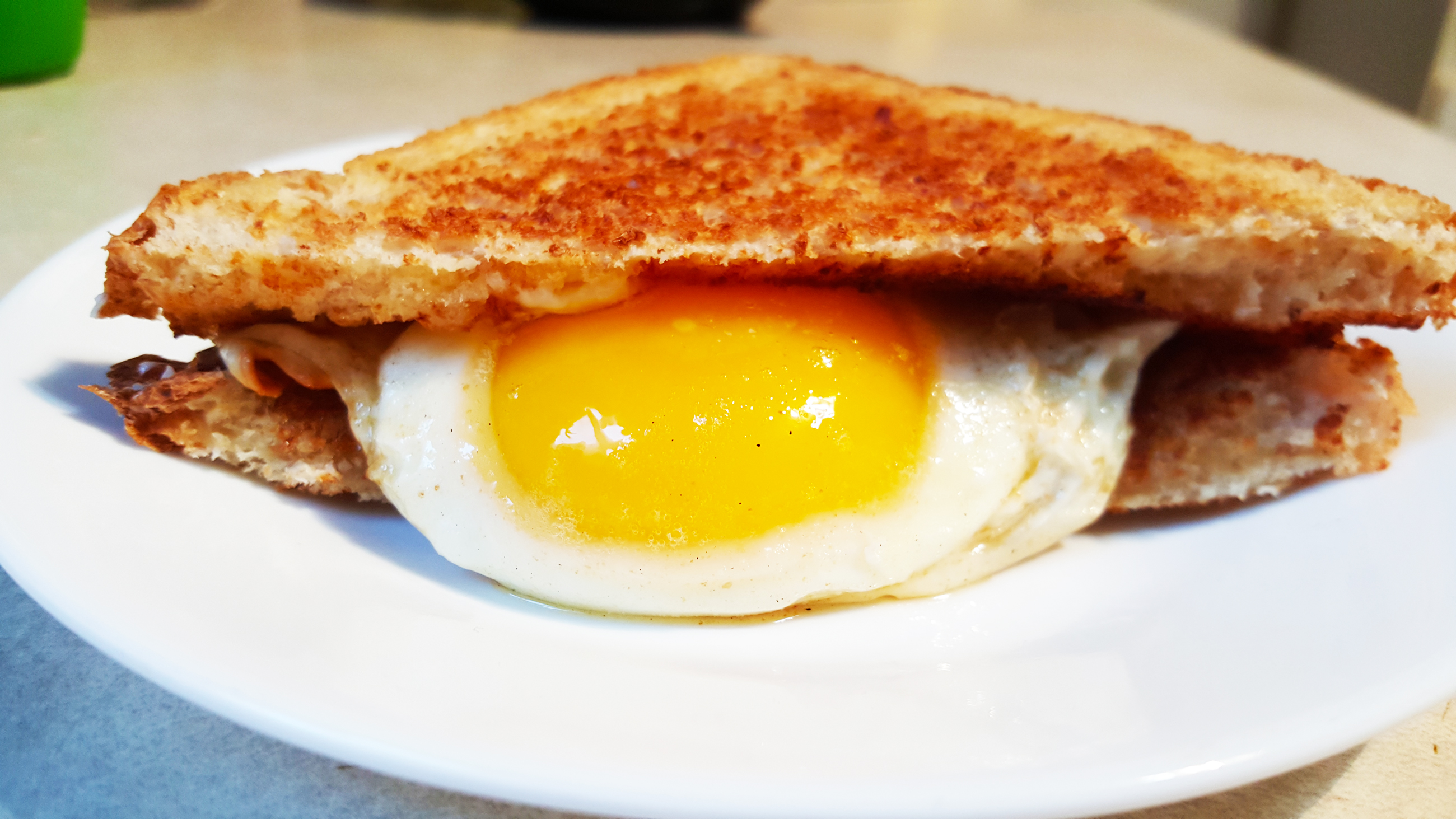Chicken Salad Fit for a Queen?
On the 2nd of June, 1953, Elizabeth Alexandra Mary Windsor was crowned Elizabeth II, Queen of the United Kingdom and a fading British Empire that had been recently rebranded as a “Commonwealth.” As Queen, she reigned–as opposed to ruling, as the British monarch is a largely ceremonial figurehead–over the Troubles of Northern Ireland, the continued decolonization of British territories across the world, the death-by-paparazzi of her former daughter-in-law, and numerous atrocities committed in her name, distantly, disconnectedly, a tiny pink pepperpot surrounded by corgis, waving benignly.
Many people in the United States, as elsewhere, are keenly interested in the doings of the British Royal family. The American tabloid industry has been capitalizing on that interest for decades. I’ve just never been terribly interested. Yes, she seemed like a nice old lady–she’s seemed like a nice old lady since I was a kid 50 years ago. Yet…
However much we may delude ourselves with corgis and Paddington Bear, marmalade sandwiches and horses, we will never know the human being who wore the crown studded with colonial loot… It is entirely incoherent to separate the queen from the Crown and, thereby, the British state.
The Queen Cannot Be Separated From The Crown, Priyamvada Gopal, Al Jazeera, 14 September 2022.
Still, I come neither to praise nor bury the late Queen, but to talk about that day in 1953, when she proceeded through the streets of London to Westminster Abbey, there to don the crown and cape, take up the orb and scepter, and swear an oath to govern all the territories of the UK in Law and Justice and Mercy, and to defend the Church of England. After that, came the feasting. In centuries past, a newly crowned English monarch would throw a lavish banquet to celebrate his or her ascension to the throne, culminating in the ludicrous opulence of George IV‘s coronation banquet in 1821.
And the Lord did grin. And the people did feast upon the lambs, and sloths, and carp, and anchovies, and orangutans, and breakfast cereals, and fruit bats, and large chulapas…
A reading from The Book of Armaments, Monty Python and the Holy Grail

The next coronation, William IV’s 10 years later, featured no banquet at all, an austere reaction to the excess of George IV. By the time of the coronation of George V, Elizabeth’s father, the banquets of the past had given way to a smaller, less formal lunch with a few hundred of their closest friends.
Still, Elizabeth’s coronation luncheon was a multi-course affair, with soups and imported fruits and pastries and a dish that was invented specially for the event by chefs at Le Cordon Bleu London that they called Poulet Reine Elizabeth, or Queen Elizabeth Chicken. It was only later that it came to be known as Coronation Chicken.
Poulet Reine Elizabeth consists of chicken poached with carrot, peppercorns, and a bouquet garni, cooled, shredded, mixed with a curry cream sauce, and served with an herbed rice, cucumber, and pea salad. Curry had been popular in the UK since the 18th Century when England first began trading with India, continued through the colonial period and the British Raj, and the recent dissolution of the Raj and the Partition of India had not lessened the British interest in those flavors.
The dish was dreamed up by Le Cordon Bleu chef Rosemary Hume and her friend Constance Spry. A similar dish had been served at the Silver Jubilee of George V, but this version was said to have a more delicate, almost nut-like flavor. Constance Spry’s “Cookery Book,” first published in 1956 but reprinted nearly 10 years ago, provided me the recipe. There wasn’t much of a description for the rice salad so I made an English-style French dressing–Dijon mustard, sugar, white wine vinegar, and oil, seasoned with salt and pepper–and chopped up a collection of herbs from my garden–mint, thyme, rosemary, some parsley, along with several scallions–and tossed them with into cooked basmati rice, green peas, and a diced English cucumber.
The rice salad was fine, but forgettable. The real star here was the chicken. This particular version of coronation chicken is quite restrained, compared to others I’ve had. I’ve written before about coronation chicken, though not in a post of its own, and I’ve always been a fan, so I was a bit surprised at the relative tameness of this ur-version of it. Still, it’s nice, a bit of tartness from apricot puree and lemon juice and a slight curry flavor don’t overpower the delicate aromatics lent to the chicken by the bouquet garni. It’s good, and compared to the delicate rice salad it’s served with, it’s quite flavor-forward, almost exotic.
But how will it sandwich?
One thing that I’ve gleaned from literally hundreds of comments on some of the videos I’ve made is this: Brits aren’t necessarily proud of their bread so much as they look down on bread from anywhere else, but especially the United States. I did not want to use a squishy white bread for this sandwich but a proper British-style sandwich loaf, cut “thick as a doorstop” and, of course, buttered.



They’ll find something to complain about I’m sure but I won’t make it easy for them. This is an “Old Fashioned Sandwich Loaf” I baked from Nigella Lawson’s recipe, with the addition of some sourdough discard to give it a bit more flavor. I cut it good and thick–about an inch per slice–and buttered it well.

To make the chicken mixture a bit more like the Coronation Chicken used for sandwiches, I added some toasted slivers of almond along with chopped cilantro and golden raisins–or coriander and sultanas to you Brits.

I spread this mixture thickly onto one slice of buttered bread.

I topped this with the other slice of buttered bread, sliced it in half, and beheld my creation. The results were… beige.

It was good–the brightness of cilantro helped a bit, and the additional texture of the almonds and golden raisins were vital. But it didn’t really grab me the way my previous forays into coronation chicken had. I don’t recall what recipe I used the first time–the second it was this NYT recipe that is probably paywalled by now–but in both cases the sauce or dressing combined mayonnaise with a higher proportion of curry powder than provided for in the original, with mango chutney in place of the apricot puree and a darker, yellower final product.
Rather than start over and waste what I’d already made–the recipe above makes a *lot* of coronation chicken, if you hadn’t guessed–I tinkered and adjusted what I already had. I cooked some curry powder and turmeric in tomato puree until aromatic and mixed it in, along with a bit of mango chutney, and I ended up with something that looked ant tasted more like the coronation chicken that I remembered.
It’s nice, the sweetness of the chutney, the apricots, and the raisins complementing the warm spices of the curry powder, the almonds, raisins, and the odd bit of mango breaking up the monotony of chicken and mayonnaise the way diced celery would in an American chicken salad. It makes for a terrific sandwich spread, and though I don’t recommend going about making it in the iterative trial-and-error way that I did, I do think it’s worth making for yourself and trying it at least once. Curry doesn’t have the prominence in the US that it does in the UK–not Indian food in general though that is also likely true, but curry the way it’s understood in the UK as a kind of blanket term for spicy, aromatic, Indian-inspired gravies. I’m talking about the way that a slightly sweet and spicy curry sauce is available at every chip shop in the UK and Ireland; the way they’ll dip their chips in it or pour it on a meat pie–it’s reductive and it’s wrong, I get it, but it’s also delicious. I wish I could order curry sauce with my fries here in the US.
Queen Elizabeth II’s reign came to an end last year, and her son was crowned Charles III, and after a brief procession through the streets of London took the crown and the cape, the scepter and orb, and vowed solemnly and quite Protestantly to try not to screw things up very badly. He chose for his coronation luncheon a vegetarian dish, a quiche of spinach and tarragon and broad beans and cheddar in a shortcrust pastry shell, and had the relatively simple recipe published and shared widely to encourage others to make it themselves.
Of course I made it as well–I’m a sucker for a good quiche, and I enjoy spinach more than an average person might think is normal. And this quiche is great, spinach-forward, seasoned by the salty sharpness of the cheddar and the bittersweetness of the tarragon, with an occasional bite of lima bean–it’s the only kind of broad bean I had on hand and my local store doesn’t carry favas–providing almost a stealthy, meatlike texture and flavor to the dish. It’s certainly far better than the words “vegetarian quiche” might suggest to you.
I don’t believe that launching his reign with a vegetarian quiche indicates a less bloodthirsty direction for the UK during this New Carolean era. Charles took the throne at the age of 73, the oldest person to ever assume the throne, and his dietary preferences seem to be strictly health-focused. Besides, the British monarch is, again, a largely ceremonial position without direct influence on policy. Yet the British royal family still controls an obscene hoard of wealth, and despite a century of decolonization, the sun still never sets over the British Empire. Figurehead he may be, but the things that the forces of his Empire do, they do in his name.

I like sandwiches.
I like a lot of other things too but sandwiches are pretty great















Have been a fan from the first post even though I’m from the UK I have always enjoyed the posts and wish we had some of the good cuisine you have over there I’d love to try a chicago dog or maxwell polish they’re drool worthy it’s nice that you are so open minded even though our offerings aren’t as noteworthy that you feature posts about them us brits are sandwich lovers we have a few good ones now and again well if you don’t count those miserable and empty rail ones keep the posts coming I love them 🙂
I don’t think British bread is much better than American bread, I suspect that the derisory comments come from a generally negative disposition towards American foods. If I was targeting any category of American food for negativity it would be cheese (not because there aren’t good ones but the average ones are mediocre, which is probably how I would describe British bread!).
Curry is a dish, but I’d say it is also a flavour, which is what I think of when Coronation chicken is mentioned: curry flavoured chicken mayo. Older recipe books will include recipes for “curried” ___ which I think are mostly whatever the main ingredient is in a curry flavoured sauce including curry powder and thickened with flour.
We exported our idea of curry to Japan, in the meantime curry in the UK became something more tomato and onion sauce based without flour, popularised by mostly Bangladeshi run “Indian” restaurants and now we have the flour thickened kind back from Japan and becoming popular, going by the inaccurate name of “katsu curry”.